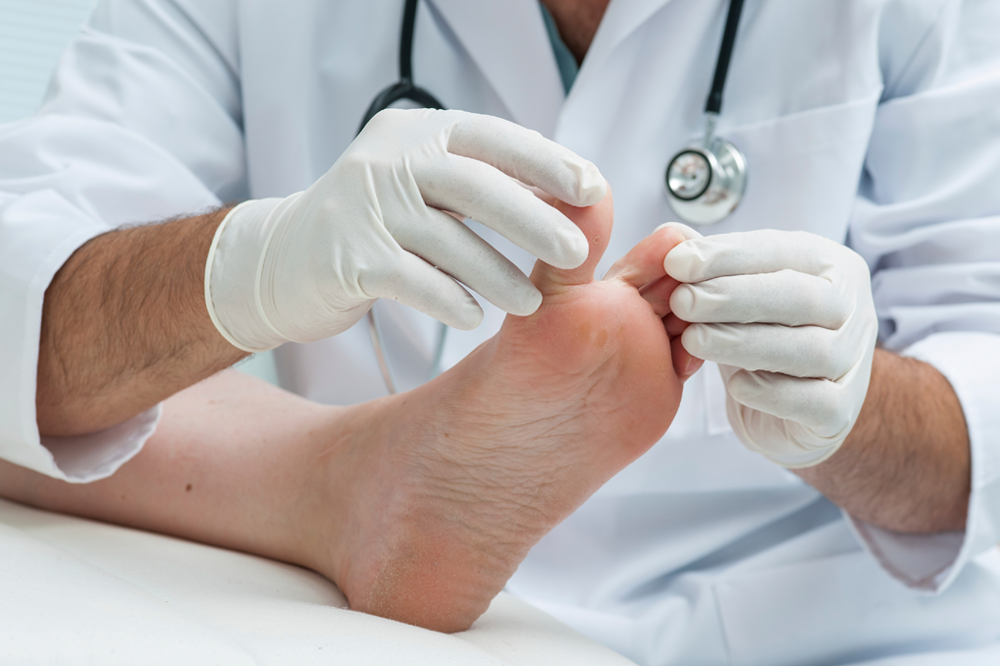More and more American adults are reaching their golden years, and the latest announcement from The United States Centers for Disease Control and Prevention is quite alarming. The government agency reports that falls are the leading cause of fatal and non-fatal injuries among senior citizens.

Recent statistics show that 2.3 million fall injuries sent older people to emergency rooms in 2010, and nearly 1 million of those patients required hospitalization. And the monetary impact is just as astounding: The CDC says those 2.3 million elderly falls translated to $30 billion in direct medical costs.
Podiatrists Step In To Prevent Elderly Falls
The shocking number of elderly falls has prompted podiatrists to shoulder quite a bit of responsibility in preventing seniors from falling and reducing the number of fall-related injuries. And the American Board of Multiple Specialties in Podiatry (ABMSP) is leading the way.
“Falling is a risk for everyone, but the risk goes up as we age, and the result is that falls can be — and in fact usually are — very serious. Falls are one of the most common reasons why older people lose their independence," said Earl R. Horowitz, D.P.M., President and Diplomate of the ABMSP, via a PRWeb press release. "The work that ABMSP podiatrists are doing in the field of fall prevention is quite remarkable. These podiatrists are at the leading edge of exciting treatments that will have real impact in improving quality of life and independence by preventing falls in the elderly."
Adds Kenneth B. Rehm, D.P.M., Diplomate of the ABMSP: “Fall prevention has long been overlooked, but we're seeing a rapid change. It's time that the medical community mobilizes resources in this area, and I'm very proud of the work that ABMSP has taken on to advance fall prevention treatments and techniques."
What’s Being Done To Prevent Elderly From Falling: Fall Risk Assessment
Rehn explains that the feet are central to mobility and balance, so podiatrists are taking a biomechanical approach to fall prevention by helping patients’ develop the musculature of the lower extremities. This will help seniors hone balance and could dramatically reduce the number of elderly falls.
But podiatrists are actively taking charge on developing further ways to cut down on senior spills. In fact, fall prevention is becoming an active part of the podiatry field.
"It is important for the podiatric physician to recognize his or her role as a member of a healthcare team in treating this vital public health issue," Doctor of Podiatric Medicine Doughlas H. Richie explained in his 2012 Podiatry Today article, “Preventing Falls In The Elderly: Where DPMs Can Have An Impact.”

Richie notes that podiatrists have unique expertise in the lower extremities, meaning they’re well-equipped to assess risk factors for falling that include things such as toe deformity, decreased range of motion, certain types of footwear and foot pain.
“By following sound, scientifically proven guidelines, there is a significant opportunity for podiatric physicians to become key players on the fall prevention team, which will improve the quality of life of their elderly patients,” he says.
What Seniors Can Do Now To Prevent Future Falls
In addition to this list of ways to prevent elderly fall, Rehm suggests that aging adults make it a point to visit their podiatrist on an annual basis.
“If you are 65+ in America, the odds are about thirty percent that you will fall this year," he warns. "Falls are very costly in dollars and in quality of life. But falling is not inevitable. The podiatric community is helping more and more people stay on solid footing. I urge seniors to seek the care of an ABMSP-certified podiatrist and take action now to prevent falls."


